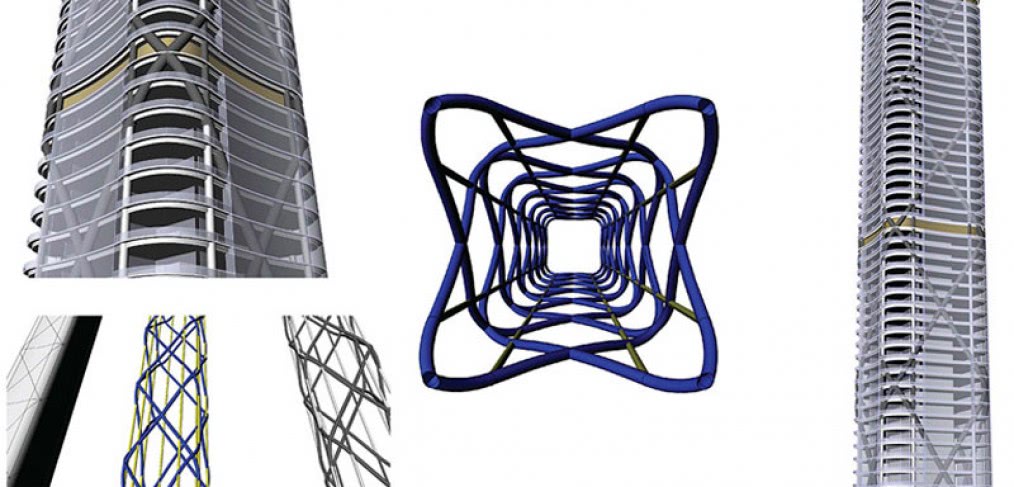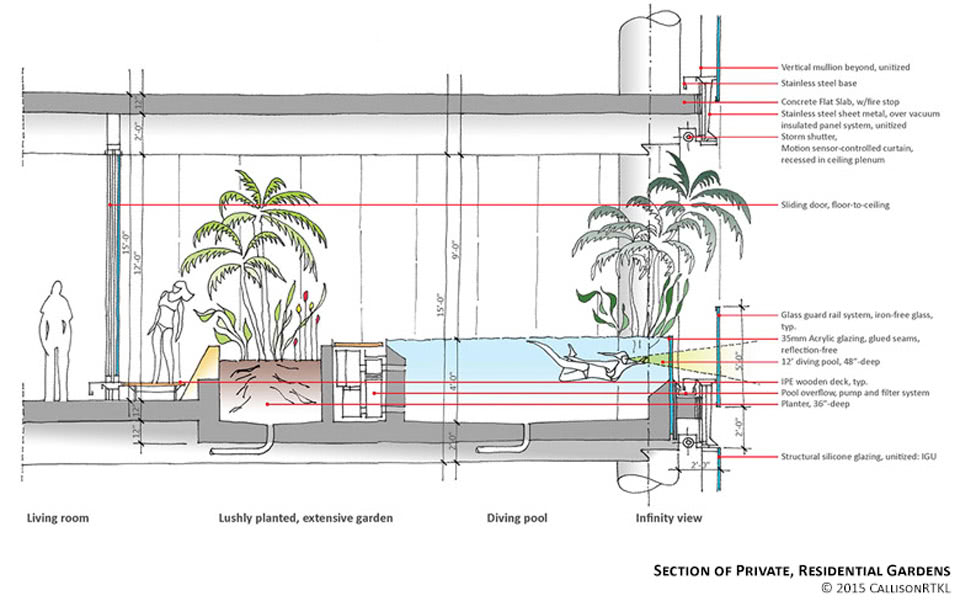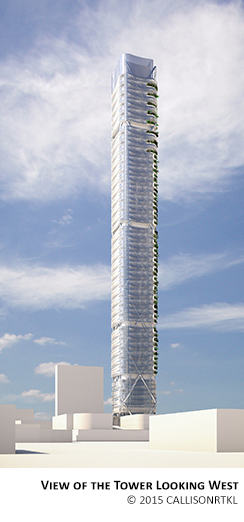
This Tall Tower Will Lower Your Heart Rate
CallisonRTKL teamed up with its parent company Arcadis in designing a new typology of the high-end residential tower. The project stands out for the novel way in which the building’s structural elements and restrained design language, informed by natural lines and organic shapes, enhance physiological functions in humans.
Innovation in the design of tall buildings occurs incrementally and is often driven by subtle changes in cultural norms, scientific discoveries and technological breakthroughs. Even until recent times, qualitative proof could suggest a theory, but could not easily be substantiated scientifically. The Biophilia Hypothesis—that an instinctive bond exists between humans and other living systems—was first introduced by Edward Wilson in his book Biophilia in 1984.
The same year a breakthrough study on the effects of exposure to green spaces was published in the journal Science by environmental psychologist Roger Ulrich. This study was the first to use the standards of modern medical research to demonstrate that views to a garden can positively affect patient recovery in hospitals and care facilities.
More recently neuroscientists and psychologists who study the effects of architectural spaces on humans have identified how vital signs respond and change with the environment. Cognitive neuroscientist Colin Ellard, author of Places of the Heart: The Psychogeography of Everyday Life, uses physical environments and immersive virtual reality to test mood, concentration and stress levels of people in varied surroundings.
Skin conductance sensors, which monitor the sympathetic nervous system, can now show that there is, in fact, a direct correlation between garden views, sinuous shapes and stress levels. Exposure to green spaces has a profound positive effect on a person’s well-being. The shape of a building can affect us too. Rectilinear forms increase stress. Sinuous forms reduce it.
CallisonRTKL’s design for this tower takes these findings into account. The gentle, curvilinear exoskeleton follows the sinuous outline of the tower floor plate. The tower celebrates its soft and organic qualities. Lushly landscaped residential gardens are a key element and strengthen positive physiological and psychological responses. Vertically suspended steel cables transfer weight so the gardens seemingly float on the building’s corners.
Standing 1,200 feet tall, the residential tower—with 60 levels of apartments on top of a ten-story luxury hotel—makes a powerful statement for the inherent beauty of organic design. Contemporary architecture, informed by recent revelations in neuroscience, can now be measured by its ability to serve as a psychological and physiological place of health and well-being.


